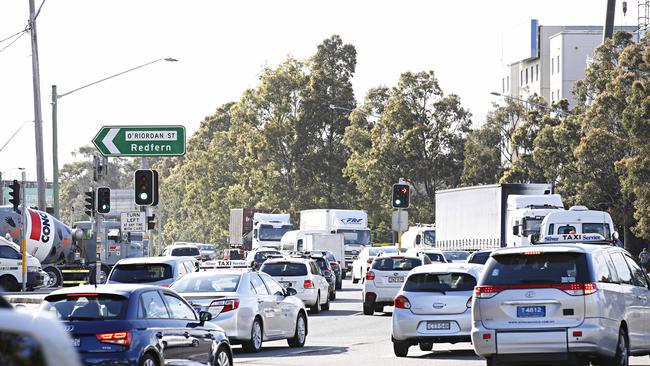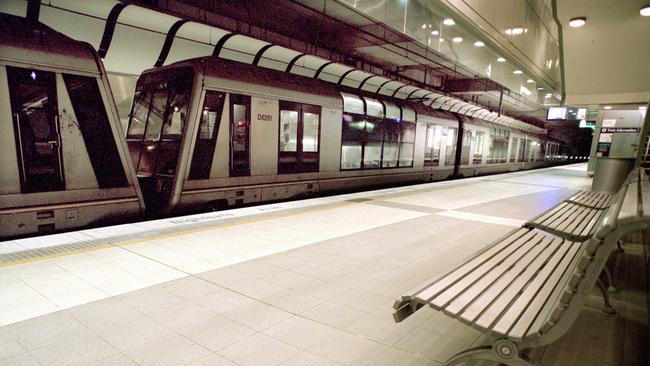Sydney Airport set for more jobs, planes and congestion
THE number of passengers passing through Sydney Airport will rocket by a staggering 51 per cent by 2039 to total of 65.6 million passengers a year. There will be more jobs, money for the local economy but strain on roads and trains and more noise from planes overhead.

Southern Courier
Don't miss out on the headlines from Southern Courier. Followed categories will be added to My News.
- Pilots' turbulence fears over Botany Bay cruise plan
- Randwick Council joins fight against cruise terminal
THE number of passengers passing through Sydney Airport will rocket by a staggering 51 per cent by 2039.
That equates to 65.6 million passengers a year or 408,260 aircraft taking off and landing — compared to 43.3 million passengers and 348,520 takeoffs and landings at present.
While it will mean more noise from aircraft overhead and added strain on public transport and roads, there will be more local jobs and million of dollars pumped into the economy.
The figures comes from the airport masterplan 2039, released last week, which plots the next 20 years of growth. The masterplan accounts for Western Sydney Airport opening on time in 2026 and taking its share of passengers.

As a result of the growth most areas of Sydney will have more planes approaching or departing Sydney at low altitude. In the southeast, areas of Coogee and Randwick will experience the biggest increase.
There are also big plans for the airport grounds with bosses developing part of the domestic terminals to accommodate the increase in international passengers.
The airport is also recommending a 13ha parcel of land to the west of Mascot as the “optimal route” for a motorway link to the WestConnex toll road.
The Northern Lands Sector, as it is called in the plan, is also earmarked for development to accommodate catering, freight and ground support facilities.

Airport bosses claim their transport plan will enable infrastructure to cope with increased numbers. The plan recommends more trains and buses and the removal of the airport station access fee.
Kingsford Smith federal Labor MP Matt Thistlethwaite echoed calls to scrap the access fee. “It’s no wonder that with non-existent bus services and a rip-off train fare that passengers and workers are forced onto the already congested roads,” he said, adding that the airport was crying out for more rail and bus services.
“The number of arriving and departing passengers daily is already up to 145,000 with 85 per cent of those making a land journey to or from the airport. This is only going to increase.
There is only one bus service to and from the busiest airport in the country. Is it any wonder our local roads are clogged and people are parking in local streets to access the airport.”
The Greens have said there is not enough detail about how public transport will be able to cope.
Cate Faehrmann MP has called on the Premier to refuse to sign off the plan.
“Global cities and their airports are serviced by world class public transport systems. Sydney is already falling well short and if this surge in airport numbers go ahead it will be a complete farce,” she said.

Airport chief executive Geoff Culbert said the masterplan set out the strategic development of the airport over the next 20 years.
“Master Plan 2039 is designed to accommodate the forecast 51 per cent increase in passenger numbers to 65.6 million over the planning period.
“International passengers, who contribute the most to the NSW and Australian economies, will be the main driver of growth and, by 2039, the mix of international and domestic passengers is expected to be 48 per cent and 52 per cent respectively.”
He added: “I commend Master Plan 2039 to you and encourage you to read it.”
To see the full document click here.
TRANSPORT AND INFRASTRUCTURE
DESPITE an expected 51 per cent increase in passengers by 2039 airport bosses say they have a traffic and transport plan to cope.
The transport strategy includes new roads, improvements to existing roads, new car parks, drop-off points and an increase in trains and buses.
The plan states that public transport is vital, particularly trains. Airport trains run every 10 minutes at off peak and six at peak. But airport bosses say upgrades make it possible to run trains every three minutes. They also recommend the removal of the pricey station airport access fee arguing it will encourage thousands of drivers off the road.

The masterplan also points to the importance of the completion of Sydney Metro City and Southwest as well as Sydney Gateway projects which will provide a new high capacity road from St Peters.
The plan states the road should be built through a 13ha piece of land to the west of Mascot. In changes to existing roads, the airport has pledged to tackle congestion on Airport Drive and Marsh St by building a new terminal 1 pick-up/drop-off point. Airport Drive will be widened and Centre Rd upgraded to allow for greater capacity.
Qantas Drive will be widened to four lanes in each direction and there will be improvements to the left turn from Qantas Drive to Robey St, Mascot, and an overhaul of the traffic signals for the entry from O’Riordan St. More drop-off spaces will be built and extra levels added to multistorey car parks.

Airport bosses are also banking on the shifting of many international passengers to the domestic terminals to help spread the load and ease congestion. There are also plans for an internal transfer service to ferry people around the airport. One option mooted is driverless buses.
The Greens dispute that the plan will be able to accommodate growth, describing it as “a plan for chaos and congestion”. “If this surge in airport numbers go ahead it will be a complete farce,” the party said.
FLIGHT PATHS AND NOISE
THERE will be 59,740 more flights taking off and landing at Sydney Airport by 2039 with an increase in noise disturbance for many residential areas.
The airport has several flight paths for incoming and departing planes, most of which will share the burden of the extra services. But despite the 51 per cent increase in passengers, the increase in flights is not as dramatic, instead rising by 17 per cent. This is largely due to planes, particularly those servicing international routes, being larger.
The Australian aviation industry measures noise disturbance by aircraft that are the equivalent to a noise reading of more than 70 decibels at ground level. The level is said to be a noise at which you would be disturbed if talking to someone or watching TV.

Comparisons of what are called N70 charts from last year and the predictions for 2039 estimate a big increase in 70-decibel noise events over Coogee and parts of southern Randwick. Parts of Rosebery and Mascot are also predicted to experience an increase. However, noise disturbance levels are not expected to rise at the same rate as the increase in aircraft. This is primarily down to the increase in new quieter planes, known as next generation aircraft.
We have two main departure flight paths and one arrival flight path over residential areas of Sydney’s southeast. The flight path over Coogee and southern Randwick had on average 13 services a day last year. By 2039 that is expected to almost triple to 38.

Our area’s main departure path goes over Mascot before either heading northeast over Centennial Park and then out to the eastern suburbs or west out over northern Maroubra. Last year there were on average 117 services a day which is expected to fall slightly to 107. The routes accommodating the main bulk of increased flights will be to the north, over the inner west.
THE AIRPORT
AS well as living near it many of us also use the airport — and there are big changes expected for passengers.
The standout development is the building of an “integrated operations precinct” at the domestic terminals 2 and 3 to make room for international passengers.
Terminal 1, which has traditionally been the gateway for international passengers, will remain but more room is needed to cater for international growth, particularly from Asia.
Next generation and automated technology is also high on the list of priorities, with driverless vehicles and smart technology expected with an aim to improve the “door-to-door” experience for passengers.

In particular plans are in place for a “transfer corridor for autonomous vehicles” between terminals. Security, customer service and bag-drop technologies are also being developed to streamline getting in and out the airport.
Refurbishment works are planned for the terminals with a focus on the forecourts and improving the restaurants and shops.
There will be new hotels and conference facilities on the airport grounds by 2039.
JOBS AND THE ECONOMY
THE airport’s predicted growth will bring tens of thousands of extra jobs to the area.
Business experts predict the total employment created by the airport will increase from 338,500 at present to 414,600 by 2039.
The airport itself employees 30,900 alone. This figure is also predicted to increase to 36,200.
The forecast for economic activity generated or facilitated by Sydney Airport is just as promising. In 2017 the figure stood at $38 billion. That will rise to $52.6 billion in 2039.

The plan also states there is room for more commercial space at the airport including hotels, offices and associated freight services — all bringing jobs and money into the local economy.
Patricia Forsythe, executive director of the Sydney Business Chamber, said the importance of the airport to the area could not be overstated.
“The figures are very encouraging,” Ms Forsythe said.
“The masterplan makes very clear that many of the jobs go to those people living in the surrounding areas.
“There is a plan in place to create a world leading airport in Sydney.”
